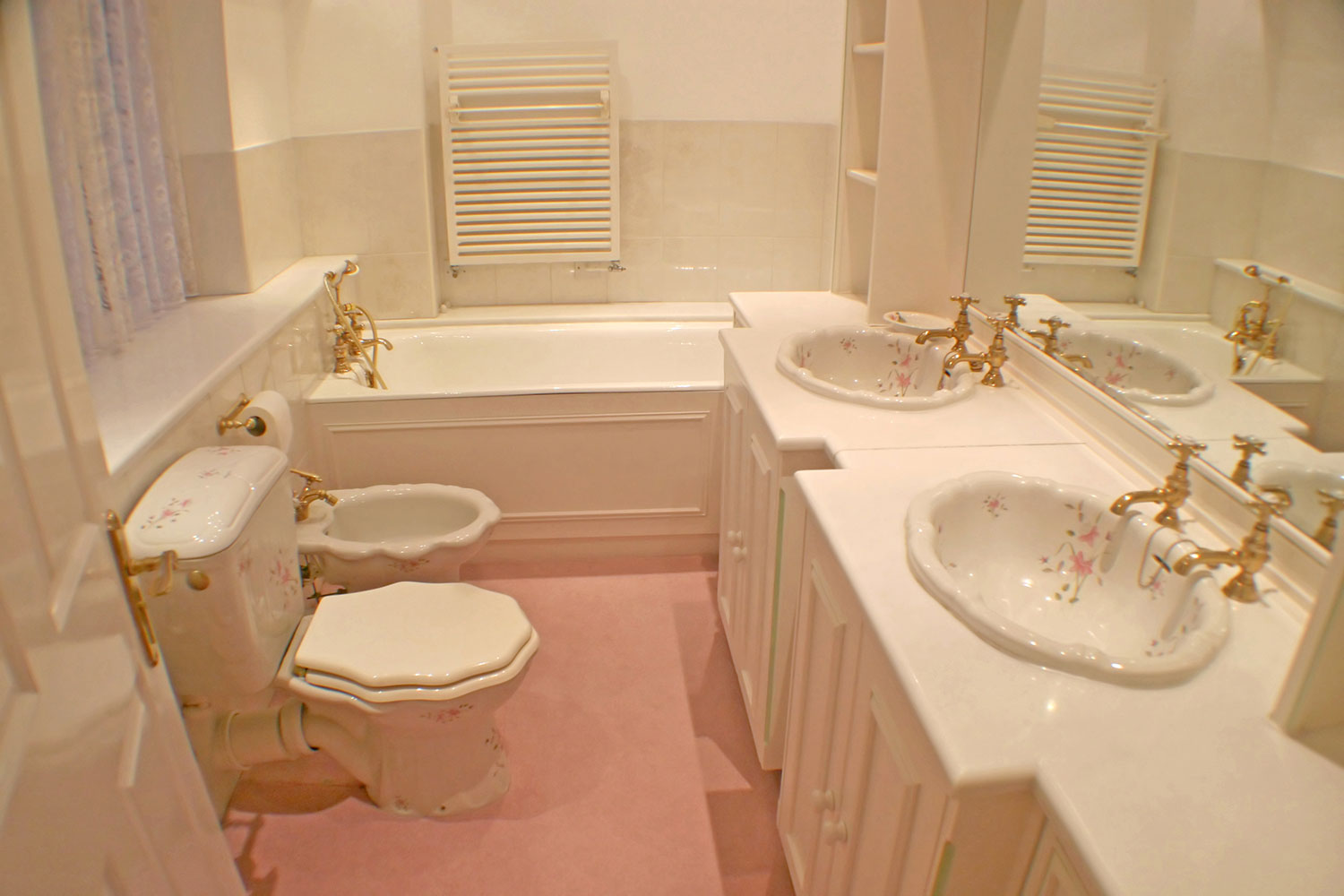
June 25, 2020 | Tyler Difley
What were we thinking? The hater's guide to carpeted bathrooms
For many people, carpeted bathrooms inspire a lot of disdain, as well as a visceral feeling that something is terribly wrong. Modern-day defenders of this peculiar design choice do exist, but they appear to be vastly outnumbered.To get to the bottom of things, it's worth exploring how carpeted bathrooms originated, their scarce charms and numerous drawbacks, and what you can do if you're stuck with one in your home.
The carpeted bathroom trend seems to have really caught on in the 1970s, and many of the carpeted bathrooms that exist today are likely holdovers from this era. However, the groundwork might have been laid even earlier. In the period after the Second World War, carpet, which had previously been quite expensive, became cheaper and more accessible to the average homeowner. This cemented wall-to-wall carpeting as a practical flooring option that still exuded comfort and luxury.
Several decades later, carpet's luxury mystique is gone, but carpeted-bathroom adherents still cite several benefits. Carpet could be tempting for some homeowners in cold climates due to its natural warmth, especially at its much lower price point compared to heated tile. The comfortable softness of carpet also has undeniable appeal, especially in an area like the bathroom where one is often barefoot. Finally, carpet offers great traction compared to hard floor surfaces, especially when wet, which can be a major selling point for seniors and people with young children.
Unfortunately, there are a host of issues with bathroom carpeting that make the benefits hard to justify. There's a reason hard flooring options like tile, natural stone and vinyl are preferable for humid environments: carpet is a moisture magnet. This leads to an increased risk of mould and mildew creation, which is one reason why the Centers for Disease Control and Prevention (CDC) advises against installing carpet in any bathroom. Mould and mildew can cause illness and exacerbate allergies, asthma and other respiratory conditions. Mould can also rot your subfloor, depending on the material.
If the hygiene argument against bathroom carpeting isn't enough, the necessary maintenance and potential for disastrous repairs should be. Water or mould damage could force you to replace the entire carpet and subfloor. Carpet also stains easily and there is no shortage of potential culprits in the average bathroom, from bleach-based cleaners to nail polish.
Now, if you're aware of the risks and you've still made the choice to carpet your bathroom, that's one thing – just make sure you opt for a low-pile carpet for durability, faster drying and easier cleaning. However, if you've moved into a new home where one or more bathrooms are outfitted with '70s-era shag, that's quite another.
If a full remodel isn't within your budget just yet, here are a few ways to take care of your bathroom carpet to extend its life and avoid costly repairs:
- Install a high-quality bathroom fan and make sure to run it when the shower or bathtub is in use
- Place bathmats to prevent water from soaking into the carpet in problem areas, such as the sink, toilet and bathtub/shower
- Use a sponge or towel to soak up pools of water that collect on surfaces before they have a chance to drip onto the carpet
- Be vigilant for bathroom leaks and deal with them swiftly if they occur
- Dry vacuum the carpet regularly to remove debris
- Quickly blot any stains that occur with damp paper towel then treat based on the specific stain type
- Shampoo the carpet annually with a hot water extractor to get rid of set in stains and grime
Tagged: bathroom | Calgary | Calgary Real Estate | Calgary Real Estate News | Design | Design | Feature | Flooring | House & Home | Hygiene | Mildew | mould | Popular This Year | Renovation | Renovations




